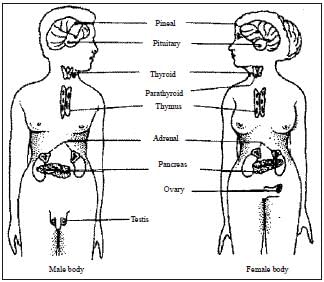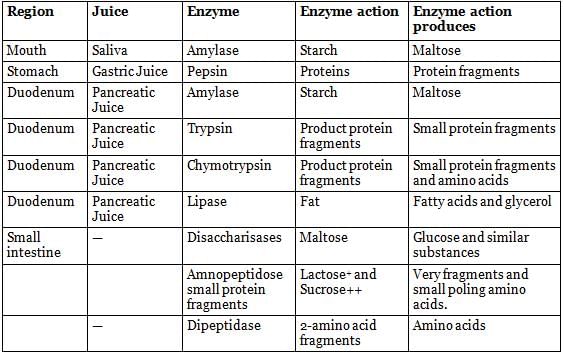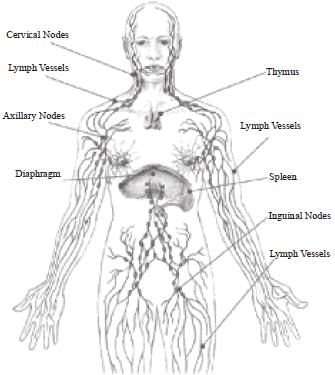NCERT Summary: Summary of Biology - 3 | Science & Technology for UPSC CSE PDF Download
Endocrine System
NERVOUS SYSTEM: THE TELEGRAPHIC SYSTEM OF COMMUNICATION AND CO-ORDINATION
Structural Basis: Neuron
- A neuron is a specialized cell in the nervous system that plays a crucial role in transmitting signals.
- Neurons consist of a central cell body containing a nucleus and cytoplasm.
- The cell body extends elongated projections:
- Dendrites: These are specialized extensions that branch out from the cell body and receive signals from other neurons or sensory receptors.
- Axon: An elongated projection that transmits signals away from the cell body to other neurons, muscles, or glands.
Reflex Action and Reflex Arc:
- A reflex action is an automatic and rapid response to a stimulus, often occurring without conscious thought.
- The pathway that mediates a reflex action is known as a reflex arc.
- The reflex arc involves at least two types of neurons:
- Sensory or Afferent Neuron: This neuron carries sensory information from the periphery (like skin or organs) to the central nervous system (CNS).
- Motor or Efferent Neuron: This neuron conveys messages from the CNS to the effector organ (muscles or glands) that needs to respond to the stimulus.
Ganglion:
- A ganglion is a cluster of nerve cell bodies outside the central nervous system.
- Ganglia can serve as relay points or integration centers for signals between different neurons.
The Endocrine System
Hormones and Glands:
- The endocrine system is a complex network of glands that produce and release chemical messengers called hormones.
- Hormones act as signaling molecules, traveling through the bloodstream to reach target organs with specific receptors.
- While the nervous system communicates rapidly through electrical impulses, the endocrine system provides slower, but longer-lasting, regulation.
Classes of Hormones:
- Steroids: These hormones, like testosterone and estradiol, are derived from cholesterol. They have a lipid-based structure.
- Peptides: Short chains of amino acids make up peptide hormones. Examples include those secreted by the pituitary, parathyroid, heart, stomach, liver, and kidneys.
- Amines: Derived from the amino acid tyrosine, amine hormones include substances like epinephrine. They often have a role in the body's response to stress.
Synthesis, Storage, and Secretion:
- Steroid Hormones: Synthesized from cholesterol in a series of biochemical reactions. Unlike other hormones, they are not stored but released immediately into the bloodstream upon synthesis.
- Peptide Hormones: These hormones are synthesized as precursor molecules. They undergo processing in the endoplasmic reticulum and Golgi apparatus, where they are then stored in secretory granules. Upon demand, these granules release hormones into the bloodstream.
- Amine Hormones: Notably epinephrine, these hormones are stored as granules in the cytoplasm of cells until they are needed. Once released, they play a crucial role in the body's "fight or flight" response.
Evolution of Endocrine Systems
- Most animals with well-developed nervous and circulatory systems have evolved an endocrine system.
- Similarities among endocrine systems across different species often result from convergent evolution, where different organisms independently evolve similar traits to adapt to similar environments.
- The vertebrate endocrine system includes several glands, such as the pituitary, thyroid, and adrenal glands, along with diffuse cell groups.
- Over fifty different hormones are secreted, and their production is influenced by the embryonic tissue layer from which the gland originated. Glands of ectodermal and endodermal origin produce peptide and amine hormones, while mesodermal-origin glands secrete hormones based on lipids
Endocrine Systems and Feedback Cycles
- Regulation through Negative Feedback:
- The endocrine system employs cycles and negative feedback to regulate physiological functions.
- Negative feedback is a regulatory mechanism that controls the secretion of almost every hormone.
- These cycles play a crucial role in maintaining physiological and homeostatic control, ensuring stability in the internal environment.
- The duration of these cycles can vary widely, ranging from hours to months, depending on the specific hormone and its function.
Mechanisms of Hormone Action
Release of Hormones and Target Cells:
- The endocrine system releases hormones that initiate specific actions in target cells.
- Receptors on the target cell membranes are specific and bind only to a particular type of hormone.
- Over fifty human hormones have been identified, each acting by binding to specific receptor molecules.
Nonsteroid Hormones (Water-Soluble):
- Nonsteroid hormones, being water-soluble, do not enter the cell directly.
- Instead, they bind to plasma membrane receptors, initiating the generation of a chemical signal or second messenger inside the target cell.
- Different second messengers, including cyclic AMP, have been identified.
- Second messengers activate intracellular chemicals, leading to the production of the desired response in the target cell.
Steroid Hormones:
- Steroid hormones utilize a different mechanism.
- They can pass through the plasma membrane due to their lipid-soluble nature.
- The action occurs in a two-step process:
- Steroid hormones bind to nuclear membrane receptors once inside the cell, forming an activated hormone-receptor complex.
- The activated complex binds to DNA, activating specific genes and increasing the production of proteins.
- This process allows for a direct influence on the genetic machinery of the target cell, leading to a more prolonged and nuanced response.

The Nervous and Endocrine Systems
Pituitary Gland and its Location:
- The pituitary gland, often referred to as the master gland, is located in a small bony cavity at the base of the brain.
- A stalk connects the pituitary gland to the hypothalamus, which controls the release of pituitary hormones.
Anterior Pituitary:
- The anterior pituitary consists of glandular tissue and is influenced by seven hypothalamic hormones.
- These hormones are released into a portal system connecting the hypothalamus and pituitary, stimulating the release of eight hormones.
- Growth Hormone (GH): Essential for growth, GH is regulated by GH-releasing hormone and GH-inhibiting hormone from the hypothalamus.
- Thyroid-Stimulating Hormone (TSH): Controls the release of thyroid hormones, regulating metabolic rates and body temperatures.
- Gonadotropins and Prolactin: Influence gamete formation, sex hormone production, and prepare breasts for milk production.
Posterior Pituitary:
- The posterior pituitary stores and releases hormones directly into the blood.
- Antidiuretic Hormone (ADH): Regulates water balance and blood pressure.
- Oxytocin: Stimulates uterine contractions during childbirth.
Biological Cycles:
- Biological cycles in the animal kingdom range from minutes to years and include hibernation, mating behavior, and body temperature regulation.
- Circadian Rhythms: Daily cycles, such as those seen in hormone fluctuations (e.g., ACTH-cortisol, TSH, GH), are known as circadian rhythms.
- The control of internal cycles involves the hypothalamus, specifically the suprachiasmatic nucleus (SCN), which receives signals from the retina and regulates hormonal production.
Endocrine: The Postal System of Communication and Co-Ordination
Hormones and Endocrine Glands:
- Hormones are chemical substances produced by endocrine glands, also known as ductless glands.
- Ductless glands are sometimes referred to as exocrine glands.
- Key endocrine glands include the thyroid (producing T3 and T4 hormones), pancreas (insulin and glucagon), adrenals, gonads, parathyroids, and the pituitary.
Thyroid Gland:
- Located in the neck, the thyroid produces hormones containing iodine, known as T3 and T4.
- Conditions such as hypothyroidism (reduced thyroid activity) can lead to cretinism in childhood, while an enlarged thyroid is called goiter.
- Universal salt iodization programs aim to address iodine deficiency.
Pancreas:
- The endocrine part of the pancreas consists of tiny islands called islets of Langerhans, with A and B cells.
- A cells secrete glucagon, and B cells secrete insulin.
- Insulin is essential for glucose metabolism, and its deficiency leads to diabetes mellitus.
- The six primary endocrine glands include the thyroid, pancreas, adrenals, gonads, parathyroids, and pituitary.
Processing of Food
Processing of Food
Alimentary Canal:
- The alimentary canal, a 9-meter long tube from hips to anus, facilitates digestion and absorption of food.
Saliva and Stomach Digestion:
- Three pairs of glands near the mouth secrete saliva, containing the enzyme amylase for starch breakdown.
- In the stomach, acidic juice homogenizes food, and the enzyme pepsin breaks down proteins into peptides.
Small Intestine: Digestive Processes
Introduction: Following digestion in the stomach, partially digested food is gradually transferred from the stomach to the small intestine.
Duodenum: The initial section of the small intestine that receives the partially digested food is called the duodenum.
Pancreatic and Gall Bladder Secretions:
- Pancreatic juice is discharged into the duodenum, originating from the pancreas.
- This juice is rich in enzymes essential for the digestion of carbohydrates, proteins, and fats.
- Additionally, bile is released into the duodenum from the gall bladder, aiding in the emulsification and digestion of fats.
Digestive Enzymes in Pancreatic Juice:
- Carbohydrates: Pancreatic juice contains enzymes that aid in the digestion of carbohydrates.
- Proteins: Enzymes in the pancreatic juice contribute to the breakdown of proteins.
- Fats: The digestive process for fats is facilitated by enzymes present in the pancreatic juice.
Role of Bile in Fat Digestion: Bile, released from the gall bladder, emulsifies fats, breaking them down into smaller droplets. This process increases the surface area for enzyme action.
Regulation by Hormones:
- The release of pancreatic and bile secretions into the small intestine is regulated by two hormones:
- Secretin: Stimulates the release of pancreatic juice rich in bicarbonate ions, which neutralize the acidic chyme from the stomach.
- Cholecystokinin (CCK): Promotes the secretion of digestive enzymes and the release of bile from the gall bladder.
- The release of pancreatic and bile secretions into the small intestine is regulated by two hormones:
Large Intestine (colon)– The absorption of water is an important function

Kidneys: The Fascinating Filters
Bean-Shaped Organs:
- Kidneys are often characterized as bean-shaped organs located on either side of the spine.
Nephrons - Filtering Units:
- Each kidney is composed of approximately a million narrow tube-like structures called nephrons.
- The urine produced by a kidney is the cumulative result of the urine formed by its nephrons.
Structure of a Nephron:
- A nephron consists of a receptacle known as Bowman’s capsule, which encloses a bunch of capillaries (glomerulus) resembling a closed fist.
- The glomerulus and Bowman’s capsule together function as filters for the blood.
Filtration Process:
- Filtration: Glomerular capillaries receive blood from an incoming vessel called the afferent arteriole and are drained by a narrower vessel known as the efferent arteriole.
Kidney's Role in Maintaining Acidity:
- The kidneys play a role in maintaining the constant acidity of body fluids by secreting acids.
Urine Formation Processes:
- The urine excreted is a result of fundamental processes: filtration, reabsorption, and secretion.
Diabetes Symptoms and ADH:
- Excessive eating (polyphagia), excessive drinking (polydipsia), and increased urine production (polyuria) are cardinal symptoms of diabetes.
- The hypothalamus produces a chemical substance called antidiuretic hormone (ADH), which, when released into the bloodstream, enhances water reabsorption in the kidneys, making the blood slightly thinner.
Adrenal Gland and Aldosterone:
- The adrenal gland, located just above the kidney, plays a crucial role in maintaining salt balance in the body.
- When the salt (sodium) concentration is slightly below normal, the adrenal gland releases aldosterone into the bloodstream, regulating salt levels.
Supportive Measures for Kidney Damage:
- When kidney damage reaches a critical point, supportive measures such as renal transplantation or dialysis (artificial kidney) may be necessary.
LYMPHATIC SYSTEM AND IMMUNITY
Components:
- The lymphatic system comprises lymph vessels, lymph nodes, and organs.
- Functions include the absorption of excess fluid, return to the bloodstream, absorption of fat in the small intestine villi, and immune system support.
Lymph Vessels:
- Lymph vessels closely associate with circulatory system vessels, resembling veins.
- Contraction of skeletal muscles propels lymph fluid through valves in lymph capillaries.
Lymph Organs:
- Lymph organs include bone marrow, lymph nodes, spleen, and thymus.
- Bone marrow produces lymphocytes, where B-lymphocytes (B-cells) mature in the bone marrow.
- T-lymphocytes (T-cells) mature in the thymus gland.
- Other blood cells like monocytes and leukocytes are produced in the bone marrow.
- Lymph nodes are concentrated areas of lymphocytes and macrophages along lymphatic veins.
- The spleen serves as a blood reservoir, filtering and purifying blood and lymph.
Thymus:
- The thymus secretes thymosin, a hormone that causes pre-T-cells to mature into T-cells.

Immunity
Definition: Immunity is the body's ability to repel foreign substances and cells.
Defense Mechanisms:
- Nonspecific responses, the first line of defense, and specific responses, the second line of defense, collectively form the immune response.
- Nonspecific responses block the entry and spread of disease-causing agents.
- Antibody-mediated and cell-mediated responses are two types of specific responses.
Immune System Roles: The immune system defends against disease-causing agents, complications in transplants and blood transfusions, and diseases arising from overreaction (autoimmune, allergies) and underreaction (AIDS).
General Defenses
Barriers to Entry:
- Physical barriers like skin and mucous membranes constitute the first line of defense.
- Skin prevents the penetration of infectious agents, and tears and saliva contain enzymes breaking down bacterial cell walls.
- Mucus secreted by mucous membranes forms an additional barrier.
Inflammation:
- Microorganisms penetrating skin or epithelium result in inflammation.
- Damaged cells release chemical signals like histamine, increasing blood flow, promoting healing, and enhancing white blood cell mobility.
Clotting Factors and Complement System:
- Clotting factors trigger the formation of small blood clots, and the complement system kills microbes, enhances inflammatory response, and collaborates with the immune response.
Interferon:
- Interferon is a species-specific chemical produced by cells under viral attack, alerting nearby cells to prepare for a virus and resist viral attacks.
Specific Defenses
Immune Response:
- The immune system generates specific responses against invaders.
- It is more effective than nonspecific methods, possessing a memory component for improved response time upon reencountering a similar invader.
Antibodies:
- Immunity results from the production of antibodies specific to antigens on invaders.
- Antibodies bind to antigens, killing or inactivating invaders.
- Antibodies are often proteins or protein-polysaccharide mixes.
|
90 videos|491 docs|209 tests
|
FAQs on NCERT Summary: Summary of Biology - 3 - Science & Technology for UPSC CSE
| 1. What is the role of the endocrine system in the body? |  |
| 2. How does the endocrine system communicate with other systems in the body? |  |
| 3. How has the endocrine system evolved in different species? |  |
| 4. What is the relationship between the nervous and endocrine systems? |  |
| 5. How does the endocrine system contribute to the processing of food? |  |

















